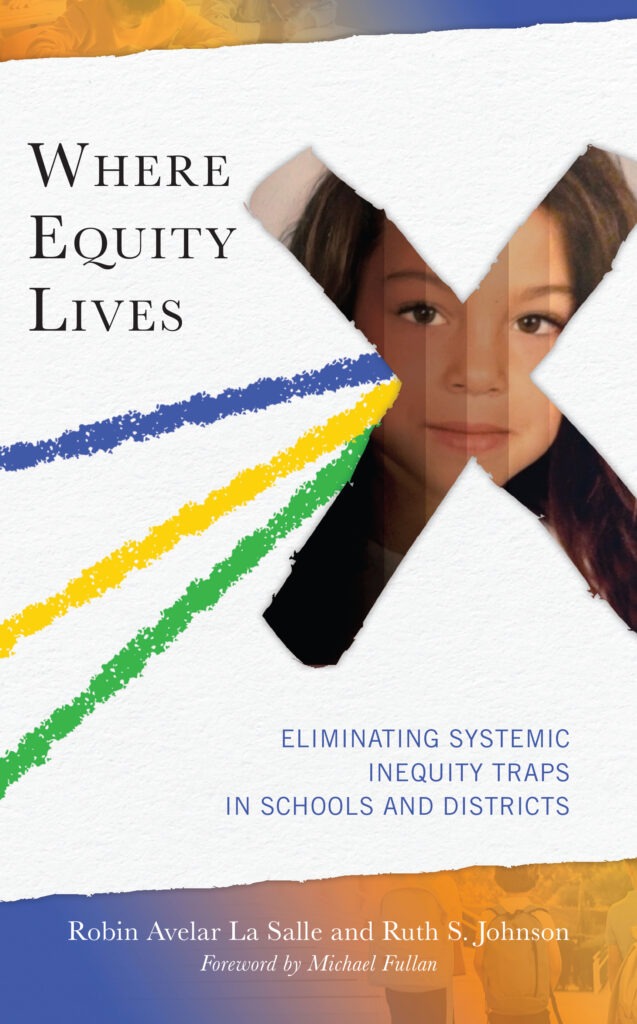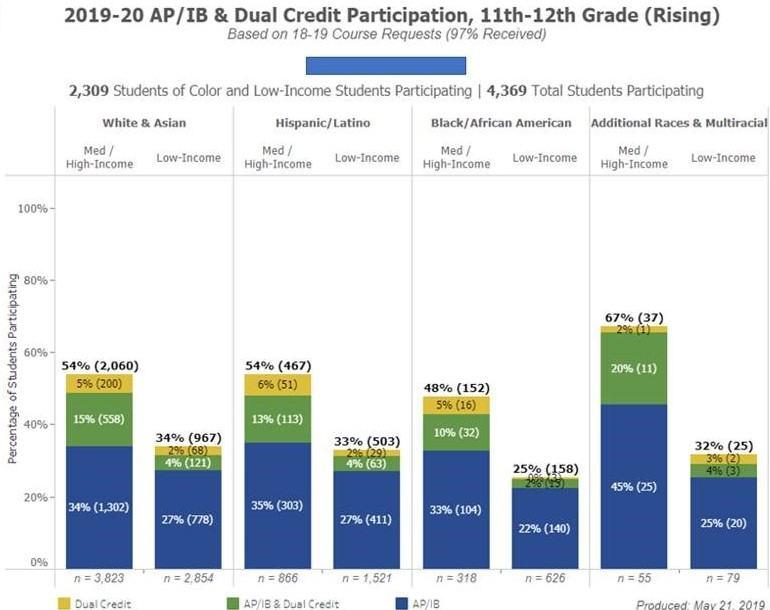In classrooms across the country, a quiet revolution is underway. School districts are increasingly recognizing that the promise of education-a promise of opportunity, growth, and success-has not been equally fulfilled for all students. As awareness grows around persistent equity gaps, educators and administrators are rethinking traditional approaches and seeking innovative strategies to level the playing field. This article explores how school districts are confronting these challenges head-on, weaving together data, community voices, and targeted programs to create learning environments where every student has the chance to thrive.
Table of Contents
- Bridging the Divide Through Inclusive Curriculum Design
- Empowering Educators with Equity-Focused Training
- Leveraging Community Partnerships to Support Underserved Students
- Innovative Funding Models Targeting Resource Disparities
- Measuring Progress and Accountability in Equity Initiatives
- Frequently Asked Questions
- Final Thoughts
Bridging the Divide Through Inclusive Curriculum Design
School districts are increasingly recognizing that equity in education begins with the materials and methods used inside the classroom. By designing curricula that reflect diverse perspectives and experiences, educators are creating spaces where every student sees themselves represented and valued. This approach not only fosters a sense of belonging but also enhances critical thinking by exposing students to a wider spectrum of ideas and histories.
Inclusive curriculum design involves a deliberate effort to:
- Incorporate voices from historically marginalized communities
- Utilize culturally relevant teaching materials
- Adapt content to be accessible for varied learning styles and abilities
- Encourage critical conversations around social justice and equity
Districts are also leveraging technology and collaborative platforms to co-create content with students, families, and community members. This participatory process ensures that the curriculum evolves with the community’s needs and aspirations. When students engage with material that resonates with their lived realities, academic engagement and achievement improve significantly.
| Strategy | Impact |
|---|---|
| Multilingual resources | Improves comprehension and inclusion |
| Community storytelling projects | Boosts cultural pride and student voice |
| Universal Design for Learning (UDL) | Supports diverse learning needs |
Empowering Educators with Equity-Focused Training
Building a foundation of equity in education starts with those at the helm-our educators. Districts across the nation are investing in comprehensive training programs designed to equip teachers and administrators with the tools they need to recognize and dismantle biases, foster inclusive classrooms, and meet the unique needs of every student. These initiatives go beyond traditional professional development by weaving cultural competence and social-emotional learning into everyday practice.
Key components of equity-focused training include:
- Workshops on implicit bias and systemic inequities
- Collaborative sessions that encourage self-reflection and peer feedback
- Strategies for differentiated instruction tailored to diverse learners
- Ongoing support through coaching and mentorship programs
Such programs empower educators to become advocates for change within their schools, promoting policies that prioritize fairness and access. The ripple effect of this empowerment is evident in classrooms where students feel seen, valued, and supported-creating a positive learning environment that nurtures success for all.
| Training Element | Purpose | Impact |
|---|---|---|
| Implicit Bias Workshops | Identify unconscious prejudices | More equitable student interactions |
| Peer Reflection Groups | Encourage continuous growth | Collaborative culture of inclusion |
| Differentiated Instruction Coaching | Customize teaching approaches | Improved engagement and achievement |
| Mentorship Programs | Provide ongoing educator support | Long-term commitment to equity |

Leveraging Community Partnerships to Support Underserved Students
Community partnerships have become a cornerstone in narrowing equity gaps by creating robust support networks that extend beyond the classroom. Schools are collaborating with local nonprofits, businesses, and health organizations to provide comprehensive resources tailored to the unique needs of underserved students. These alliances enable access to after-school tutoring, mental health counseling, and nutrition programs, ensuring that learning is not hindered by external challenges.
These partnerships often involve multi-layered engagement strategies that empower students and families alike. For instance, mentorship programs connect students with professionals who share similar backgrounds, fostering a sense of belonging and aspiration. Additionally, family resource centers established through community collaboration offer workshops on college readiness, financial literacy, and technology use, bridging the gap between school and home environments.
To illustrate the impact, consider the following table highlighting typical services provided through these community partnerships:
| Service | Partner Type | Primary Benefit |
|---|---|---|
| After-School Tutoring | Local Nonprofits | Improved Academic Performance |
| Health Screenings | Community Clinics | Early Detection of Health Issues |
| Mentorship Programs | Business Professionals | Career Guidance & Motivation |
| Family Workshops | Educational Foundations | Enhanced Parental Engagement |
By weaving these community assets into the fabric of educational support, districts are not only addressing immediate barriers but also cultivating an inclusive ecosystem where every student can thrive. This holistic approach exemplifies how collaboration is a powerful engine for equity and opportunity in education.

Innovative Funding Models Targeting Resource Disparities
Across the nation, districts are pioneering funding mechanisms that directly tackle the uneven distribution of educational resources. These innovative models go beyond traditional allocations, harnessing community partnerships, grants, and technology-driven solutions to ensure every student has access to quality learning tools.
One standout approach is the implementation of weighted student funding, where financial resources follow the student based on specific needs such as socioeconomic status, language proficiency, or disability. This method allows schools serving higher-need populations to receive augmented support, enabling targeted interventions and enriched programs.
- Community Investment Funds: Leveraging local businesses and philanthropy for supplemental funding.
- Grant Collaboratives: Districts partnering to apply for large-scale educational grants.
- Technology Equity Initiatives: Redirecting funds to provide devices and internet access for underserved students.
| Model | Key Feature | Impact |
|---|---|---|
| Weighted Funding | Needs-based budget allocation | Improved resource targeting |
| Community Funds | Local partnerships & donations | Enhanced extracurriculars |
| Grant Collaboratives | Joint grant applications | Expanded program offerings |
| Tech Equity | Device & internet access | Increased digital inclusion |
These forward-thinking frameworks not only narrow gaps in material resources but also cultivate a culture of equity and shared responsibility. By redefining how funds flow within and beyond district lines, schools are laying foundations for sustained educational justice.

Measuring Progress and Accountability in Equity Initiatives
To truly bridge equity gaps, school districts are embracing data-driven strategies that illuminate where disparities persist and where efforts are succeeding. This involves establishing clear, measurable goals tied to student outcomes, resource allocation, and community engagement. Progress is tracked through continuous monitoring and transparent reporting, ensuring that every stakeholder-from educators to parents-understands the impact of equity initiatives.
Key metrics often include:
- Graduation rates disaggregated by race, income, and special education status
- Access to advanced coursework and extracurricular opportunities
- Teacher diversity and retention within underserved schools
- Student disciplinary actions and their proportionality
Accountability frameworks are evolving to incorporate both qualitative and quantitative data, recognizing that numbers alone don’t capture the full story. Districts are increasingly utilizing surveys, focus groups, and community forums to gather insights on school climate and inclusivity. This holistic approach fosters a culture of continuous improvement where equity is a shared responsibility.
| Equity Indicator | Baseline | Year 1 Goal | Year 2 Goal |
|---|---|---|---|
| Graduation Rate Gap (%) | 15% | 10% | 5% |
| Access to AP Courses (%) | 40% | 55% | 70% |
| Teacher Diversity (%) | 20% | 30% | 40% |
Frequently Asked Questions
Q&A: How School Districts Are Addressing Equity Gaps in Education
Q1: What are equity gaps in education, and why do they matter?
A: Equity gaps refer to the disparities in academic achievement and access to resources among students from different backgrounds, often influenced by race, socioeconomic status, or geography. These gaps matter because they perpetuate cycles of inequality, limiting opportunities for many students and undermining the fundamental promise of equal education for all.
Q2: How are school districts identifying the specific equity gaps within their communities?
A: Many districts start by collecting and analyzing data on student performance, attendance, discipline rates, and access to advanced coursework. They often engage families, educators, and community leaders in conversations to understand contextual factors, ensuring a nuanced picture that goes beyond numbers.
Q3: What strategies are commonly used to close these equity gaps?
A: Strategies vary but often include targeted interventions like tutoring and mentoring, culturally responsive teaching practices, equitable funding allocations, professional development for staff on implicit bias, and expanding access to advanced placement or gifted programs for underrepresented students.
Q4: Can you give an example of an innovative approach a school district has taken?
A: Some districts have implemented “equity labs,” collaborative spaces where teachers experiment with new curricula and teaching methods designed to be inclusive and representative of diverse student experiences. Others have launched community partnership programs that integrate social services with schooling to address external barriers to learning.
Q5: How do districts measure success in closing equity gaps?
A: Success is measured through improved academic outcomes, higher graduation rates, increased participation in advanced courses, and more equitable disciplinary practices. Importantly, districts also look for qualitative feedback from students and families to gauge whether all students feel seen, supported, and valued.
Q6: What challenges do school districts face in addressing equity gaps?
A: Challenges include limited funding, resistance to change, systemic biases, and the complexity of addressing issues that extend beyond the classroom, such as poverty and housing instability. Sustained commitment and community collaboration are essential to overcoming these hurdles.
Q7: How can parents and community members support efforts to close equity gaps?
A: Engaging in school boards, advocating for equitable policies, volunteering, and fostering inclusive school environments all contribute. Community voices help ensure that equity initiatives reflect the real needs and strengths of the students they aim to serve.
Q8: Why is addressing equity gaps critical for the future of education?
A: Closing these gaps not only promotes fairness but also enriches the learning environment for all students. It prepares a diverse generation of young people to thrive in a complex world, driving social mobility and strengthening communities. Education equity is the foundation for a more just and prosperous society.
Final Thoughts
As school districts continue to navigate the complex landscape of educational equity, their efforts reveal a commitment not just to closing gaps, but to reimagining what learning can look like for every student. While challenges remain, the innovative programs, community partnerships, and data-driven strategies emerging across districts offer a hopeful blueprint for a more inclusive future. In this ongoing journey, equity is not a destination but a dynamic process-one that requires persistence, creativity, and a shared belief that every learner deserves the opportunity to thrive.
